- | 8:00 am
Why apple leather is the latest vegan trend in luxury bags and shoes

Chances are, you’ve heard of vegan leather. You’ve probably even heard of mushroom leather, but what about apple leather?
A byproduct of the apple juice industry, apple leather is made from repurposing the cores and skins that aren’t needed to make juice. The remnants are transformed into a pulp, which is then mixed with organic solvents and polyurethane to create a leather-like piece of fabric.
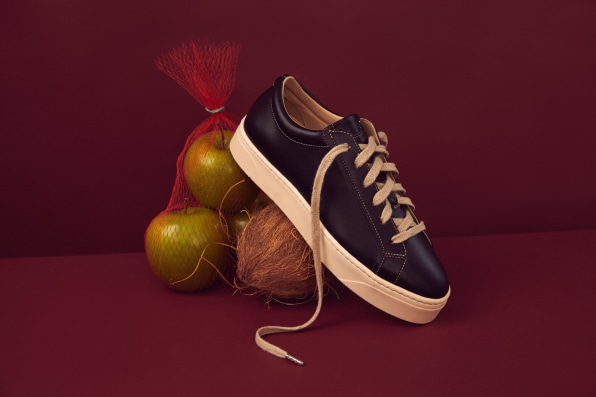
[Photo: courtesy Sylven]
The material may be a waste product, but the designs are anything but. Luxury brands like Sylven New York, Samara, and Good Guys Don’t Wear Leather are making apple leather one of their key materials.Leather alternatives have been growing in popularity, as an increasing number of brands—and consumers—want to avoid animal byproducts. But vegan, synthetic leather comes with its own set of problems, as it’s made from 100% polyurethane, requires fossil fuels, and is harmful for the planet. Apple leather, on the other hand, only requires 40-50% plastic, and can even help reduce greenhouse gas emissions from food waste.
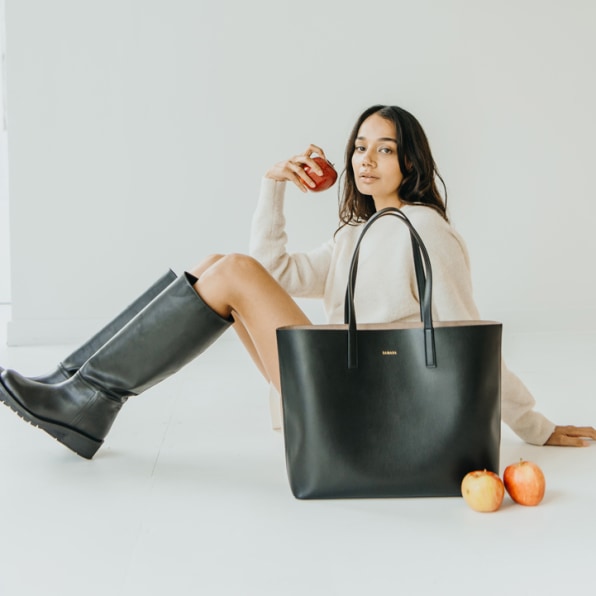
[Photo: courtesy Samara]
Salima Visram, founder of Samara, works with a factory in Europe that produces the apple leather for her bag collection. “We tried mushroom, pineapple leather, and coconut leather, but it didn’t have the luxury leather feel we wanted,” says Visram. “It’s our goal to design things that stand the test of time.”Apple leather is particularly well suited for bags and shoes because the material is naturally thick. Meanwhile, mushroom leather, which has seen a surge in recent years, can vary in weight depending on how it’s grown. Mushrooms are quickly regenerative, which makes the raw material more immediately available than apple byproducts, but it provides a slightly different texture that not all designers prefer.
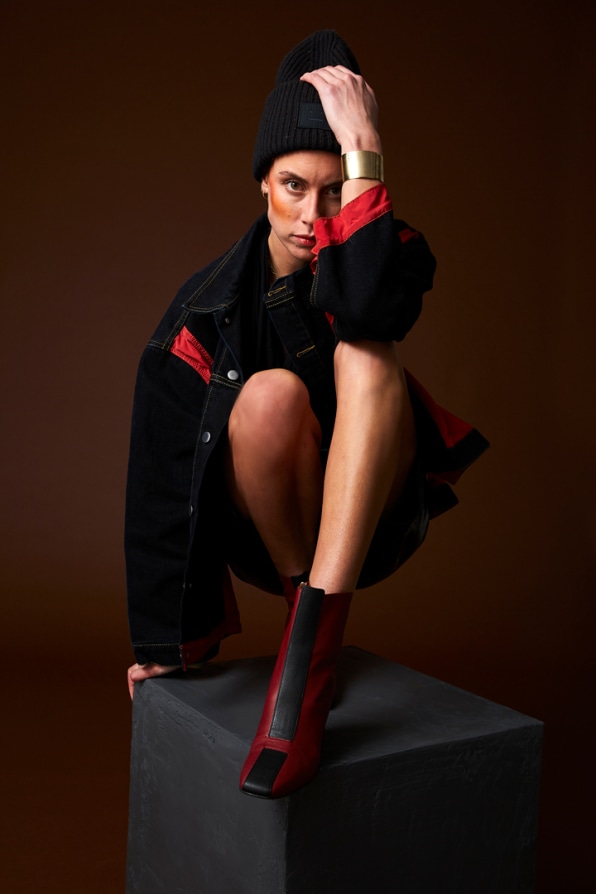
[Photo: courtesy Sylven]
Figuring out how to make luxury products out of alternative leathers has been a challenge. Casey Dworkin, founder and creative director of Sylven New York, first sourced plant-based materials in 2019; in 2021, she made the transition to a full collection of apple leather sneakers and heeled boots. She says shoes are one of the hardest things to make from plant-based materials because they’re composed of multiple pieces and aren’t as malleable as animal leather: Just one of her shoes is made up of between 60 and 100 pieces. (She added more seams to the boots to make these designs work.)
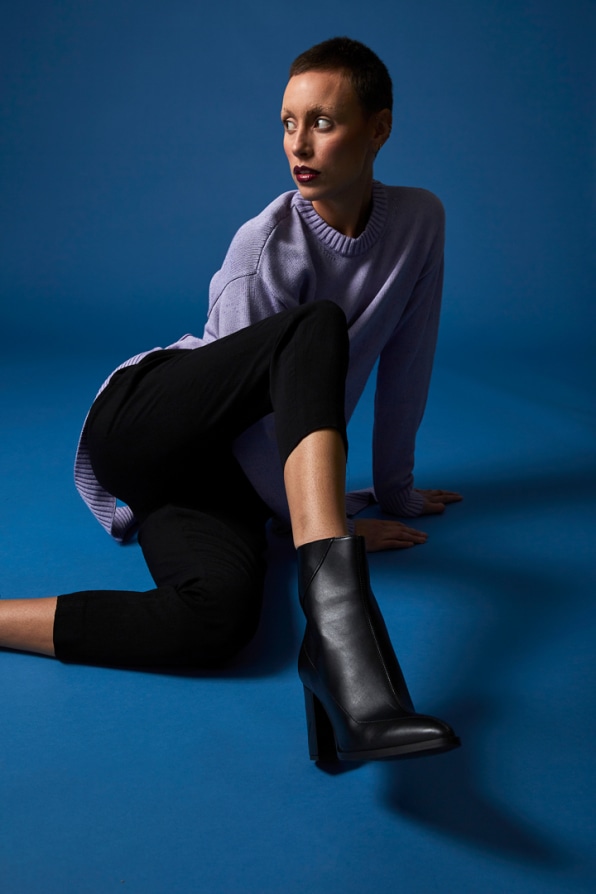
[Photo: courtesy Sylven]
Her apple leather sneaker includes a lining of wheat and corn byproducts, a sole made from corn husks and tree sap, laces from organic cotton, and apple leather. Even with all of those organic ingredients, the apple leather is still 50% polyurethane and the shoes require a fabric backing in order to support the body’s weight. “Being resource conscious was always my number one top priority,” says Dworkin. “It’s a moving target and doesn’t mean one thing. My intention was to make [shoes that were] the least impactful on the environment, high end, and matched the heritage of shoemaking that I’d seen in the industry.”Sourcing the apple byproducts is major a challenge for designers working in this space, particularly since much of it has to come from Europe, where the recycling infrastructure is better equipped to handle food waste. “Right now, if we have a large order in production for 4,000 bags, it’s almost impossible to get the raw materials,” says Visram. “That’s the largest roadblock, and something the fashion industry will have to figure out in the next five years, because we should be able to mass produce things when needed.” Manufacturing is also a challenge, as factories can only handle a certain number of production runs and there are less dye options readily available.
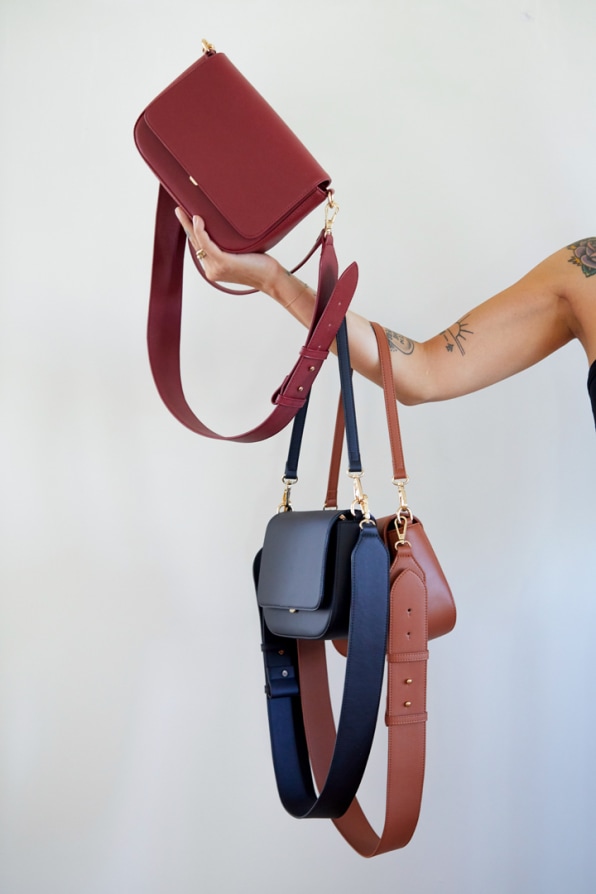
[Photo: courtesy Samara]
For apple leather to truly take off, the food and retail industries will need to communicate, much as they do with the production of animal leather. “Ninety-nine percent of real leather is made from byproducts of the food industry. It’s a symbiotic relationship,” says Ashley Kubley, assistant professor of fashion design at the University of Cincinnati and head of the fashion technology center at the College of Design, Architecture, Art, and Planning (DAAP). To that end, many meat processing plants have a tannery onsite to consolidate the process. This relationship saves around 7.3 million tonnes of biological waste from landfills each year.
These limitations mean that, for now at least, products made from apple leather are often more expensive than those without. Visram says Samara’s apple leather bags are 20-30% more expensive to produce than its vegan bags. (From a consumer price point, the apple leather bags cost twice as much.)
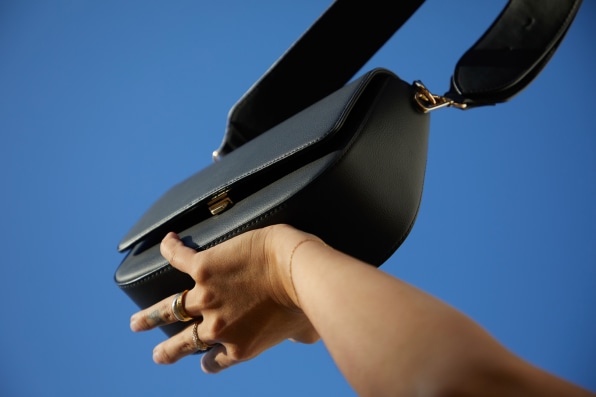
[Photo: courtesy Samara]
Still, Dworkin says apple leather can be as much as 15% cheaper to source than the Italian leather she previously used. (Her collection ranges from $295 to $425.) Because manufacturing costs are high, the challenge is being able to scale apple leather products in a way that’s not cost-prohibitive.And even then, it can be difficult to get customers on board. “The real test of true scalability is whether the product feels familiar to the customer. If the apple leather doesn’t feel real, then most of consumers are going to have a hard time adopting that material and embracing it,” says Kubley.
Visram says customers have connected with Samara bags because of their unique backstory. The bags were previously sold in a San Francisco boutique, where people would often ask questions about the apple leather products. “People would come in just to ask, ‘Can we bite it? How is it made of apples?’ It’s a cool talking point,” says Visram.
Dworkin, meanwhile, says her shoes continue to sell out, and they’ve outperformed any other vegan materials she’s used. She credits the material’s success to its ability to mimic real leather.
“The shoes need to look visually identical to leather shoes,” says Dworkin. “How do we get the vegan curious or non-vegan mainstream interested? It has to be about an emotional connection to the design. If you want to change how people shop, you have to offer them things they love.”




































